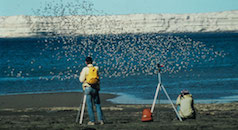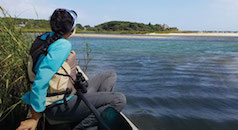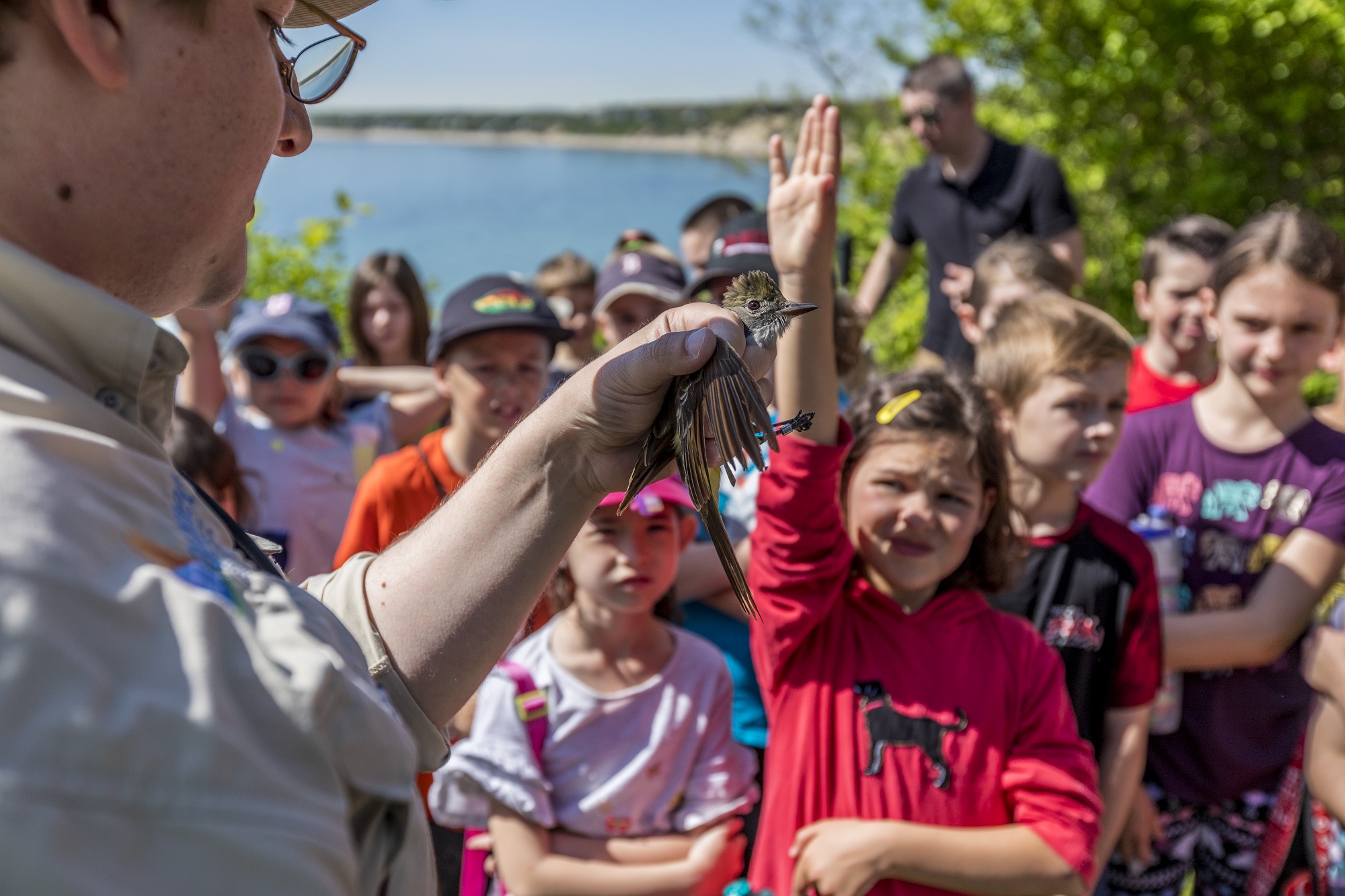Search Results

Green Infrastructure for a Healthy and Resilient Taunton River Watershed
Healthy, intact natural systems provide multiple benefits to the challenges posed by climate change. For example, forests and wetlands sequester and store carbon dioxide, helping to limit global warming. At the same time, these natural systems also enhance watershed resiliency by protecting biodiversity and limiting water pollution and flooding from heavy precipitation events. Nature-based approaches to climate change adaptation can provide significant cost savings as compared to gray infrastructure solutions such as engineered flood control structures. This approach to strategic conservation planning, known as green infrastructure, has gained momentum over the last few years because of its lasting economic, social and environmental benefits. Manomet is working with a consortium of nonprofit and governmental organizations in the Taunton River...
WHSRN Celebrates 30th Anniversary
As some of nature’s most ambitious and amazing long-distance migrants, shorebirds travel thousands of miles over the course of their annual migration and are dependent on a network of key areas in which to rest and “refuel” throughout their lifecycle. In the early 1980s, scientists in the Americas began documenting serious declines in shorebird populations, which led to recognition of the need for a site-specific, hemisphere-scale conservation strategy. This vision was formalized in 1985 with the creation of the Western Hemisphere Shorebird Reserve Network (WHSRN). WHSRN follows a simple idea: to sustain healthy populations of shorebirds, we must maintain the ecological integrity of the key sites that provide the habitats and nourishment they need for survival. This year is...
Fostering collaboration and shorebird conservation in the Mississippi Delta
When you think of Mississippi, shorebirds are probably not the first thing that comes to mind. Yet each year during both fall and spring migrations, over half a million shorebirds rely on the inland wetland habitats found in the Mississippi River Alluvial Valley. The region historically contained a complex and diverse array of habitats including wetlands, sloughs, oxbows and mudbars that likely supported these birds, but changes to the region’s hydrology through ditching, draining, levees, reservoirs, and channels have altered these systems greatly. Today there are fewer acres and types of habitats, but managed public and privately-owned lands in the Delta can start to make up the difference by providing important places to rest and refuel that shorebirds require...
Delta Wind Birds Co-Hosts Regional Shorebird Conservation Workshop for Wildlife Biologists and Landowners
This article was originally published by Delta Wind Birds on October 14, 2015. Access the original article here. Managers of public and private lands from six southeastern states gathered this week in Lambert and Isola, Mississippi, for workshops highlighting land management to support migrating ‘shorebirds’ passing through the Delta. Delta Wind Birds, a local nonprofit organization promoting shorebird conservation, partnered with Manomet, a nonprofit focused on bird conservation, education, and business sustainability, the US Fish and Wildlife Service, and the Lower Mississippi Valley Joint Venture, to host the workshop. Shorebirds are a family of birds including sandpipers and plovers, which are often associated with sandy beaches and barrier islands. However, these birds rely on other habitat types, like inland wetlands found...
Bled, scraped and starved to death: Exploding tick numbers threaten this New England beast
This article is written by Darryl Fears was originally published by the Washington Post on October 7, 2015. Read the original article here. Fair warning: What you’re about to read will make your skin crawl. Right now, in the woods of Maine and New Hampshire, tens of millions of winter ticks are pouring out of eggs and climbing up stalks until they reach an ideal peak — about the height of a moose. If a moose happens by — male, female, calf … winter ticks don’t care — they climb aboard. Other types of ticks, such as wood ticks and deer ticks, grab a bite and drop off. Winter ticks are much greedier. They hang on for the entire winter, fattening up on blood until...
Manomet lands $288,000 NOAA grant for clam farming work
This article was published by the Island Institute on September 29, 2015. See the article here. The National Oceanic and Atmospheric Administration (NOAA) has awarded Manomet a two-year, $288,000 grant to help Maine towns set up softshell clam farms. The grant comes from the NOAA/National Marine Fisheries Service Saltonstall-Kennedy Grants Program, which funds projects that address the needs of fishing communities, optimize economic benefits by building and maintaining sustainable fisheries, and increase other opportunities to keep working waterfronts viable. Maine’s $18 million (in 2013) softshell clam (Mya arenaria) industry is the state’s third most valuable fishery, after lobster and elvers (glass eels). Softshell clam harvesting has been a mainstay of coastal communities for centuries, but with the warming waters in the Gulf of Maine in...
NOAA Awards Manomet $288,000 Grant to Help Maine Coastal Towns Pioneer Softshell Clam Farming
The National Oceanic and Atmospheric Administration (NOAA) has awarded Manomet a two-year, $288,000 grant to help Maine towns set up softshell clam farms. The grant comes from the NOAA/National Marine Fisheries Service Saltonstall-Kennedy Grants Program, which funds projects that address the needs of fishing communities, optimize economic benefits by building and maintaining sustainable fisheries, and increase other opportunities to keep working waterfronts viable. Maine’s $18M (2013) softshell clam (Mya arenaria) industry is the state’s third most valuable fishery, after lobster and elvers (glass eels). Softshell clam harvesting has been a mainstay of coastal communities for centuries, but with the warming waters in the Gulf of Maine in recent years, the invasive European green crab (Carcinus maenas) is decimating clam...
American Oystercatcher: Why would a bird need a business plan?
This article was originally published by the National Fish and Wildlife Service. Access the full article here. Just a few years ago, the future looked bleak for the American oystercatcher. The charismatic shorebird, easily recognized by its long, red-orange beak and striking, red-rimmed yellow eyes, was once fairly common along the Eastern Seaboard. But by 2008, a mere 11,000 remained, scattered along the country’s shoreline between Maine and Texas. Biologists were projecting a 12 percent drop — maybe more — in oystercatcher numbers over 10 years. Coastal development, human disturbance and predation at fewer remaining nesting sites had taken a toll. Profound threats loomed, including coastal sea level rise and contamination of the species’ primary food source, its namesake bivalve. “They were...
Manomet Researchers Set to Embark on Largest Breeding Shorebird Survey
The Yukon Delta National Wildlife Refuge is thought to support one of the largest and most diverse populations of breeding shorebirds in the Western Hemisphere. However, there has never been a complete survey to measure breeding populations there—until now. This May, Manomet’s Stephen Brown and Brad Winn will join five scientists from the U.S. Fish and Wildlife Service to immerse themselves in this immense wetland wilderness and implement the largest survey of breeding shorebirds ever conducted. The full survey will take two seasons to complete and is part of the Program for Regional and International Shorebird Monitoring (PRISM) which plans to cover all prime shorebird habitats in the North American Arctic. An aerial shot...
National Fish and Wildlife Foundation 2014 Annual Report: Long-term Investments Reverse Population Decline
This is a segment of the National Fish and Wildlife Foundation's 2014 Annual Report. Access the full report here. Just a few years ago, the future looked bleak for the American oystercatcher. The charismatic shorebird with a red-orange beak and striking, red-rimmed yellow eyes was once fairly common along the Eastern Seaboard. But by 2008, less than 11,000 remained, scattered along the shore between Maine and Texas. Biologists were projecting a 12-percent drop in oystercatcher numbers over 10 years. Coastal development, human disturbance and predation at nesting sites had taken a toll. More threats loomed, including sea-level rise and contamination of the species’ primary food source, its namesake shellfish. “They were not quite on the brink of extinction, but they were...



